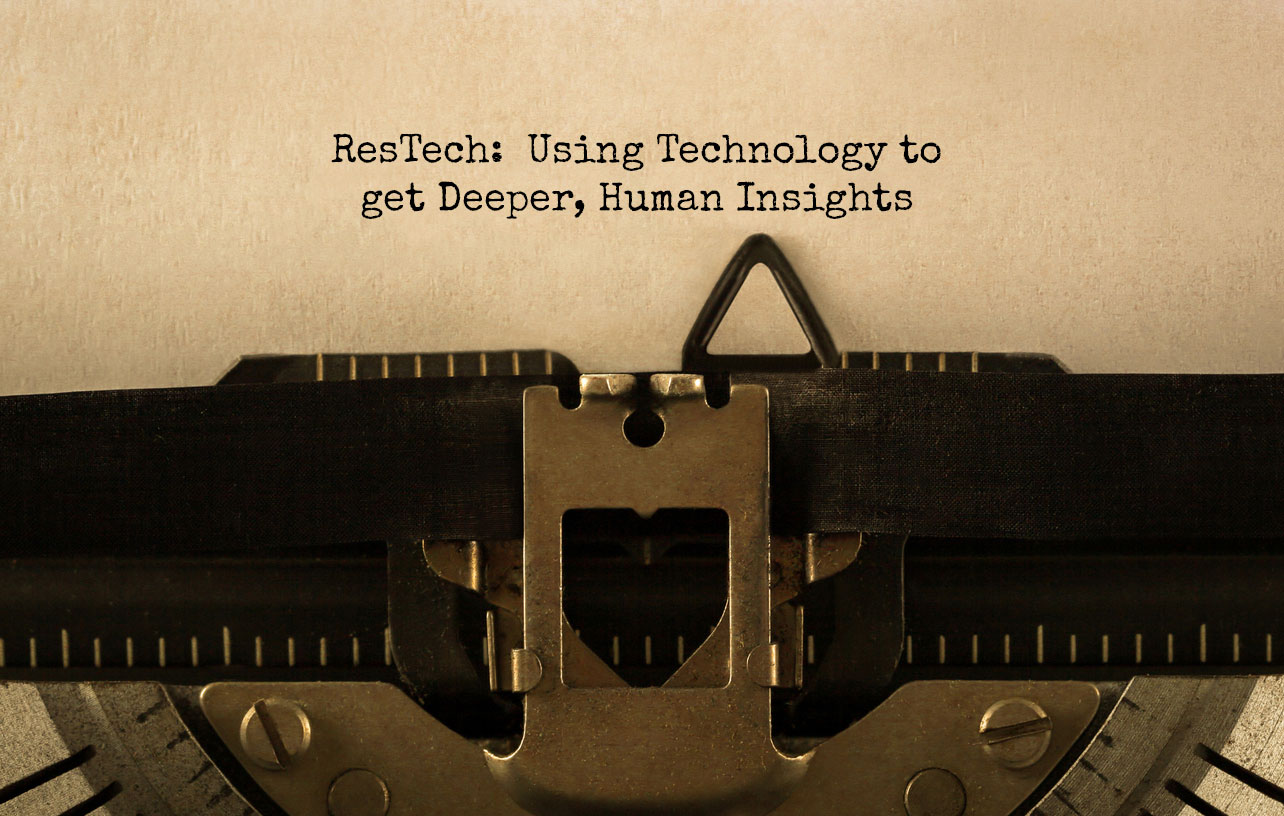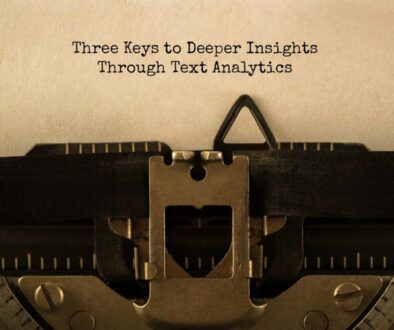ResTech in Qualitative Research: Using Technology to Get Deeper, Human Insights
Quantitative market researchers have never had qualms about using the latest technology to enhance the speed, efficiency and depth of insights in data collection and analysis. But for some reason, technology is still a dirty word among many qualitative folks.
That’s because many qualitative researchers believe that technology is a barrier, rather than a pathway, to deep human understanding.
But this is a mistake, particularly these days when research technology, or ResTech as it’s called, can not only make qualitative analysis more efficient, it can make it more comprehensive, less biased and less noisy.
By combining tech and touch, artificial intelligence and human intelligence, qualitative market researchers can use technology to get deeper human insights than ever before.
Never has this been more true than now, when the pandemic has driven all qualitative research online. Many qualitative researchers have been forced to execute asynchronous online studies that produce an avalanche of textual and visual data. If you try to analyze this the old-school way – one respondent at a time – it’ll take you forever, you won’t get a comprehensive picture of your data, and you’ll be susceptible to your own biases (whether you want to admit it or not).
I also believe that qualitative research’s “soft science” interpretative nature has long put it at a disadvantage to quant’s “hard science” reputation. Qual is still seen as “directional” and “preliminary” compared to quant’s confirmatory nature.
But these days, asynchronous online platforms, AI text analytics packages and coding software in the hands of a skilled qualitative researcher can change all that.
How can technology make qualitative analysis better?
It’s more comprehensive
Text analytics and coding software allow you to analyze qualitative data in a much more comprehensive way than human analysis ever can. It gives you a holistic view of your data and allows you to see patterns and relationships you’d never uncover with the naked eye.
In addition, the mere act of formatting and cleaning your data to upload to a software platform can give you a more thorough understanding of your data set than you would otherwise have.
I’m always telling our RealityCheck strategists that you should know your data better than anyone else in the room. When a client-observer from a focus group says, “I heard them say X,” we should know whether “X” was actually said, how often and by whom.
It’s less biased
Human qualitative analysis is a very noisy endeavor. It is filled with confirmation bias, rushes to judgment, social influence, and interpretation errors. (For more on bias and noise, read Daniel Kahneman et al.’s excellent new book “Noise: A Flaw in Human Judgment.”) All too often, qualitative researchers gravitate toward an attractive idea they see early on in their analysis and then begin to search for evidence to support it. If you don’t approach qualitative analysis with rigor, you’ll be subjected to bias. There’s no way around it.
Using technology not only forces rigorous analysis that will reduce bias and noise, it almost always reveals patterns and relationships that are far more interesting than what you might come up with on your own. As with many things in life, the truth is much more interesting once we find it. It just takes patience and a little technology to uncover it.
It’s more efficient
Qualitative data are unstructured, which makes them really hard to analyze. To do it right without technology takes forever. (That’s why, by the way, qual researchers who don’t use technology often rush to judgment. Being more systematic is hard and takes a long time!) But by using technology, you can go wider, deeper and do it faster.
When you gain efficiencies in your analysis, you can spend more time thinking about what it all means for your stakeholders.
And that brings me to this: I’m not advocating the dehumanization of qualitative research.
Human intelligence still needs to be at the helm. Why is this? Because there are still some things a skilled qualitative researcher brings to analysis that machines can’t replicate (Not yet anyway). Namely:
Meaning
Only a human eye can derive meaning. AI might reveal patterns and relationships a human analyst wouldn’t detect. But only a human can determine whether that pattern is interesting or relevant. And even software-enabled coding is an interpretive act. As one codes qualitative data, one works through increasing levels of abstraction and conceptualization. But that’s okay. I believe human and machine, working together, can produce theory and concepts that are still grounded in a deep, comprehensive, accurate understanding of the data.
Storytelling
People don’t remember data points. They remember stories. To motivate people within organizations to act, you need simple, compelling narratives. So far, I haven’t seen a machine that can translate statistics to story like a human can.
Well, some humans that is. Market researchers are notoriously bad storytellers. But storytelling is a craft that can be learned. So, learn it. (Especially if you don’t want to be replaced by a machine someday!)
So, when you’re doing qualitative market research, don’t shun technology. Embrace it. Use it to make your analysis deeper, more comprehensive and more efficient.
As always, let me know what you think. I’d love to hear your thoughts on ResTech and its proper place in qualitative market research.























